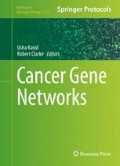Abstract
Alternative splicing is widely recognized for playing roles in regulating genes and creating gene diversity. Consequently the identification and quantification of differentially spliced transcripts are pivotal for transcriptome analysis. However, how these diversified isoforms are spliced during genomic transcription and protein expression and what biological factors might influence the regulation of this are still required for further exploration. The advances in next-generation sequencing of messenger RNA (RNA-seq) have enabled us to survey gene expression and splicing more accurately. We have introduced a novel computational method, graph-based exon-skipping scanner (GESS), for de novo detection of skipping event sites from raw RNA-seq reads without prior knowledge of gene annotations, as well as for determining the dominant isoform generated from such sites. We have applied our method to publicly available RNA-seq data in GM12878 and K562 cells from the ENCODE consortium, and integrated other sequencing-based genomic data to investigate the impact of splicing activities, transcription factors (TFs) and epigenetic histone modifications on splicing outcomes. In a separate study, we also apply this algorithm in prostate cancer in The Cancer Genomics Atlas (TCGA) for de novo skipping event discovery to the understanding of abnormal splicing in each patient and to identify potential markers for prediction and progression of diseases.
Access this chapter
Tax calculation will be finalised at checkout
Purchases are for personal use only
References
Florea L, Song L, Salberg SL et al (2013) Thousands of exon skipping events differentiate among splicing patterns in sixteen human tissues [v2; ref status: indexed, http://f1000r.es/2dl]. F1000Research 2:188
Hu Y, Huang Y, Du Y et al (2013) DiffSplice: the genome-wide detection of differential splicing events with RNA-seq. Nucleic Acids Res 41:e39. doi:10.1093/nar/gks1026
Wang W, Qin Z, Feng Z et al (2013) Identifying differentially spliced genes from two groups of RNA-seq samples. Gene 518:164–170
Laurent L, Wong E, Li G et al (2010) Dynamic changes in the human methylome during differentiation. Genome Res 20:320–331
Ye Z, Chen Z, Lan X et al (2014) Computational analysis reveals a correlation of exon-skipping events with splicing, transcription and epigenetic factors. Nucleic Acids Res 42:2856–2869
Pushkarev D, Neff NF, Quake SR (2009) Single-molecule sequencing of an individual human genome. Nat Biotechnol 27:847–850
Foissac S, Sammeth M (2007) ASTALAVISTA: dynamic and flexible analysis of alternative splicing events in custom gene datasets. Nucleic Acids Res 35(Web Server issue):W297–W299
Trapnell C, Pachter L, Salberg SL (2009) TopHat: discovering splice junctions with RNA-Seq. Bioinformatics 25:1105–1111
Katz Y, Wang ET, Airoldi EM, Burge CB (2010) Analysis and design of RNA sequencing experiments for identifying isoform regulation. Nat Methods 7:1009–1015
Trapnell C, Williams BA, Pertea G et al (2010) Transcript assembly and abundance estimation from RNA-Seq reveals thousands of new transcripts and switching among isoforms. Nat Biotechnol 28:511–515
The ENCODE Project Consortium (2012) An integrated encyclopedia of DNA elements in the human genome. Nature 489:57–74
Catalona WJ, Partin AW, Finlay JA et al (1999) Use of percentage of free prostate-specific antigen to identify men at high risk of prostate cancer when psa levels are 2.51 to 4 ng/mL and digital rectal examination is not suspicious for prostate cancer: an alternative model. Urology 54:220–224
Jemal A, Bray F, Center MM et al (2011) Global cancer statistics. CA Cancer J Clin 61:69–90
Shen MM, Abate-Shen C (2010) Molecular genetics of prostate cancer: new prospects for old challenges. Genes Dev 24:1967–2000
Clarke RA, Schirra HJ, Catto JW et al (2010) Markers for detection of prostate cancer. Cancers (Basel) 2:1125–1154
Berger MF, Lawrence MS, Demichelis F et al (2011) The genomic complexity of primary human prostate cancer. Nature 470:214–220
Kornblihtt AR, de la Mata M, Fededa JP et al (2004) Multiple links between transcription and splicing. RNA 10:1489–1498
Baca SC, Prandi D, Lawrence MS et al (2013) Punctuated evolution of prostate cancer genomes. Cell 153:666–677
Goodrich JA, Tjian R (2010) Unexpected roles for core promoter recognition factors in cell-type-specific transcription and gene regulation. Nat Rev Genet 11:549–558
Barski A, Cuddapah S, Cui K et al (2007) High-resolution profiling of histone methylations in the human genome. Cell 129:823–837
Wang ET, Sandberg R, Luo S et al (2008) Alternative isoform regulation in human tissue transcriptomes. Nature 456:470–476
Author information
Authors and Affiliations
Corresponding author
Editor information
Editors and Affiliations
Rights and permissions
Copyright information
© 2017 Springer Science+Business Media New York
About this protocol
Cite this protocol
Wang, J., Ye, Z., Huang, T.H., Shi, H., Jin, V.X. (2017). Computational Methods and Correlation of Exon-skipping Events with Splicing, Transcription, and Epigenetic Factors. In: Kasid, U., Clarke, R. (eds) Cancer Gene Networks. Methods in Molecular Biology, vol 1513. Humana Press, New York, NY. https://doi.org/10.1007/978-1-4939-6539-7_11
Download citation
DOI: https://doi.org/10.1007/978-1-4939-6539-7_11
Published:
Publisher Name: Humana Press, New York, NY
Print ISBN: 978-1-4939-6537-3
Online ISBN: 978-1-4939-6539-7
eBook Packages: Springer Protocols

